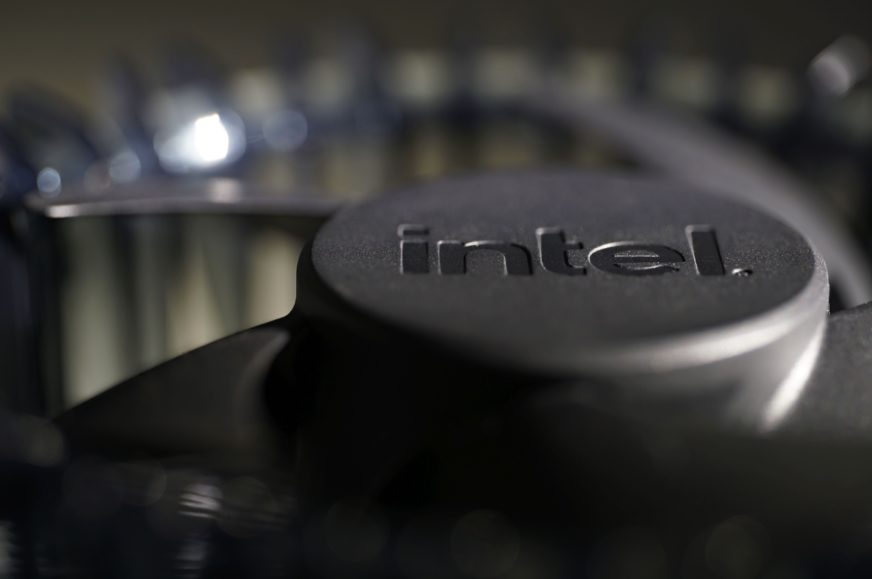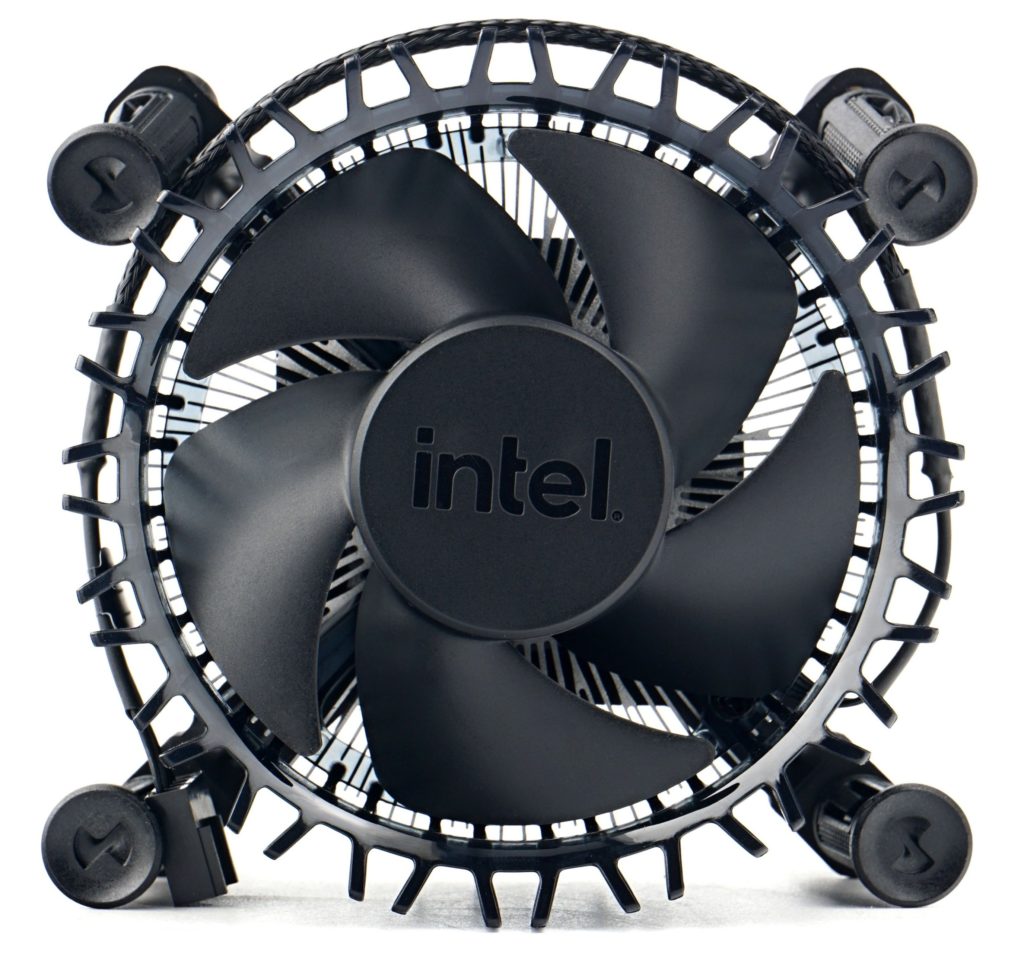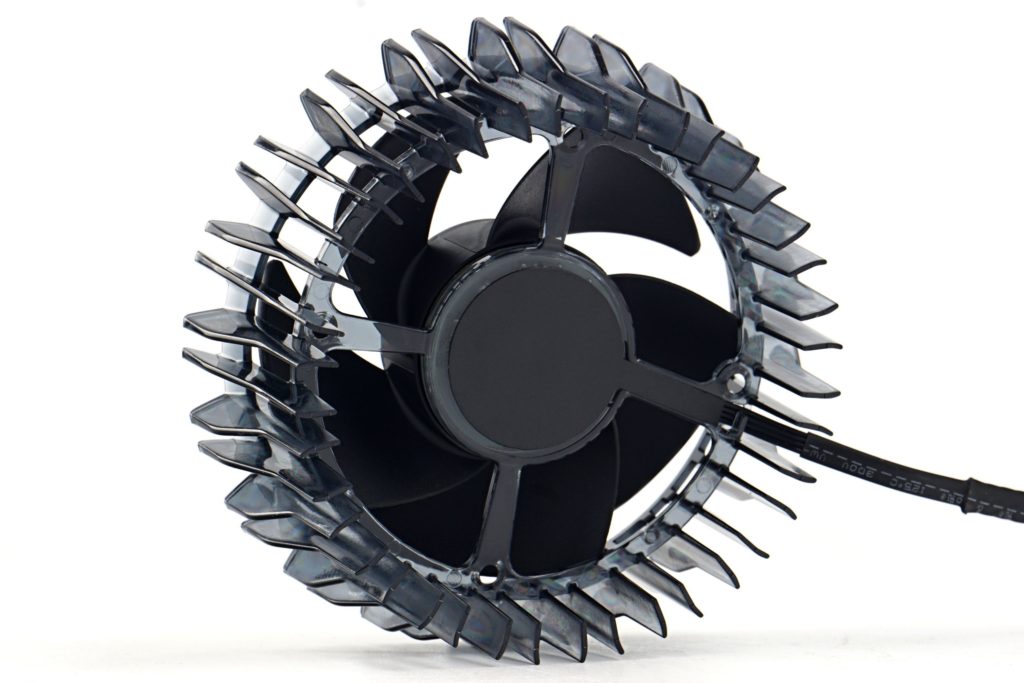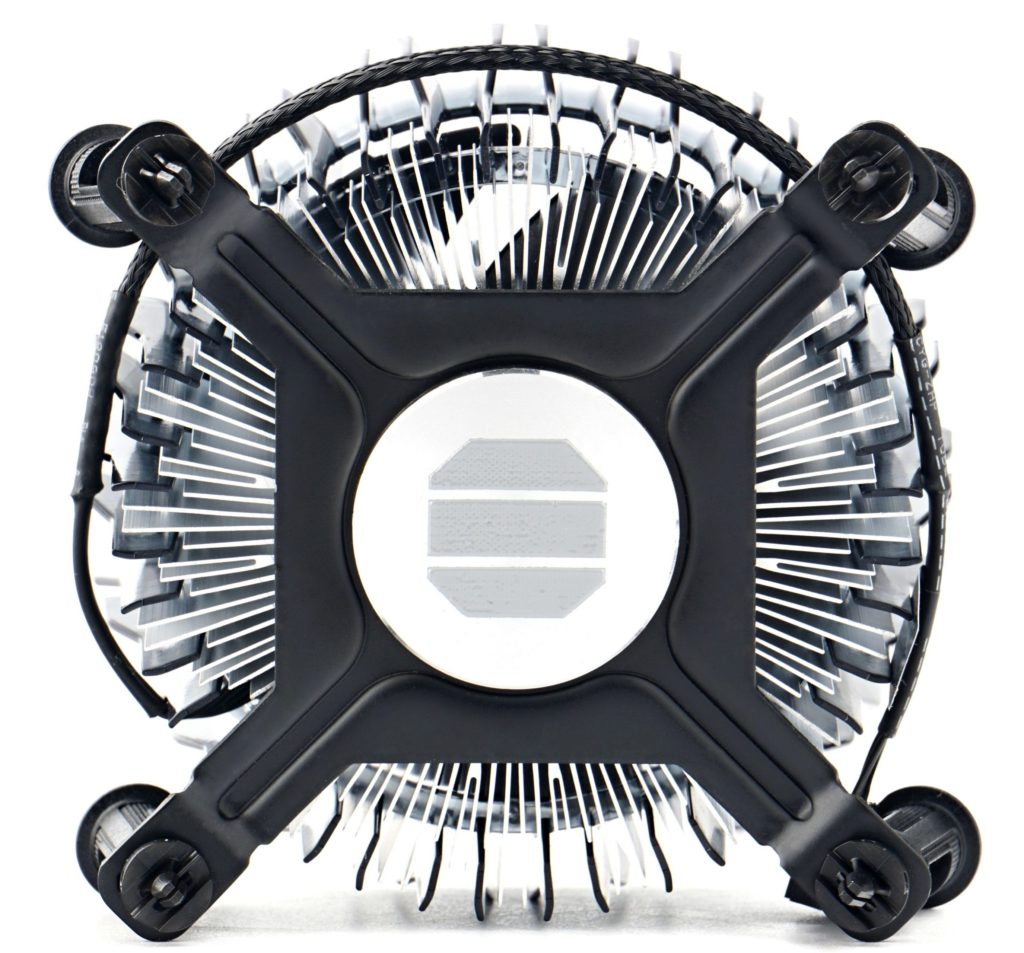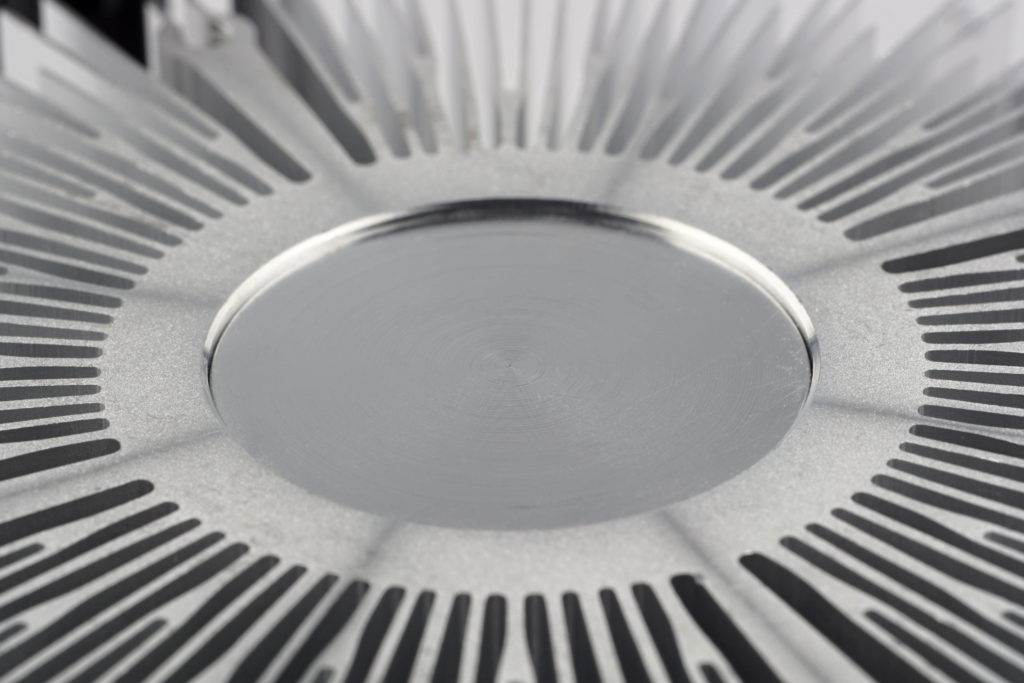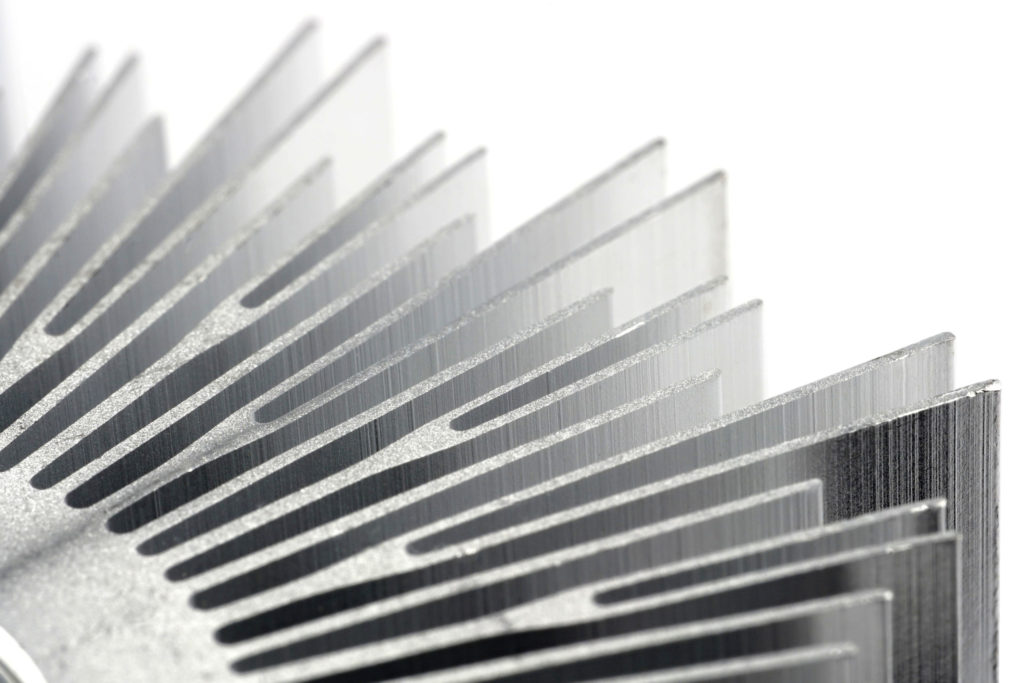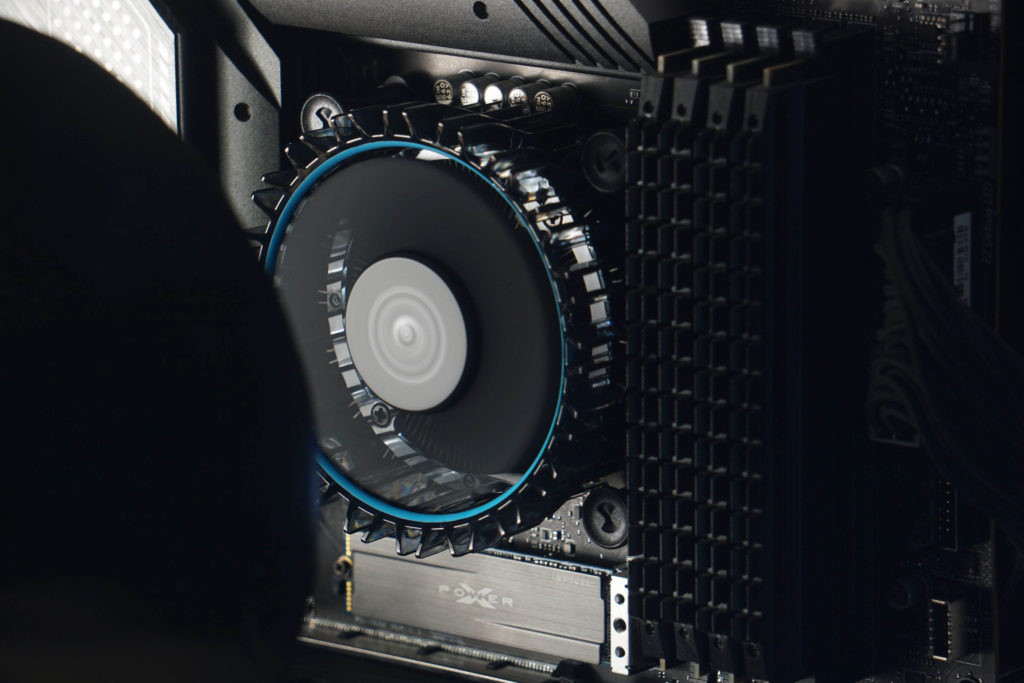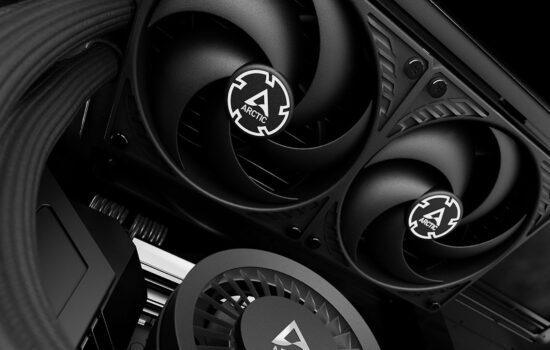The Intel Laminar RS1 cooler in detail
We didn’t cover the Pentium G7400’s cooler in our tests, but we’ll fix that now. The Laminar RS1 also comes with the Celeron G6900, another economical processor whose demands are far exceeded by the box cooler. Also in this class there is an efficiency gain over the last generation, and the Laminar RS1 is more efficient than its predecessor with a copper core at the same noise level, which deserves increased attention.
Intel’s box coolers should definitely no longer be the target of any ridicule and unjustified humiliation. For example, the Laminar RM1 is more efficient (at the same noise level it has higher cooling performance) than the Arctic Alpine 17, and the Laminar RS1, a class below it, is not much worse.
The Intel Laminar RS1 cooler in detail
The dimensions of the Laminar RS1 are exactly the same as the Laminar RM1, which comes with more powerful processors (Core i3-Core i7). At 47mm in height, it still fits into a number of very small Mini-STX motherboard cases, including the ASRock MiniDesk B660.
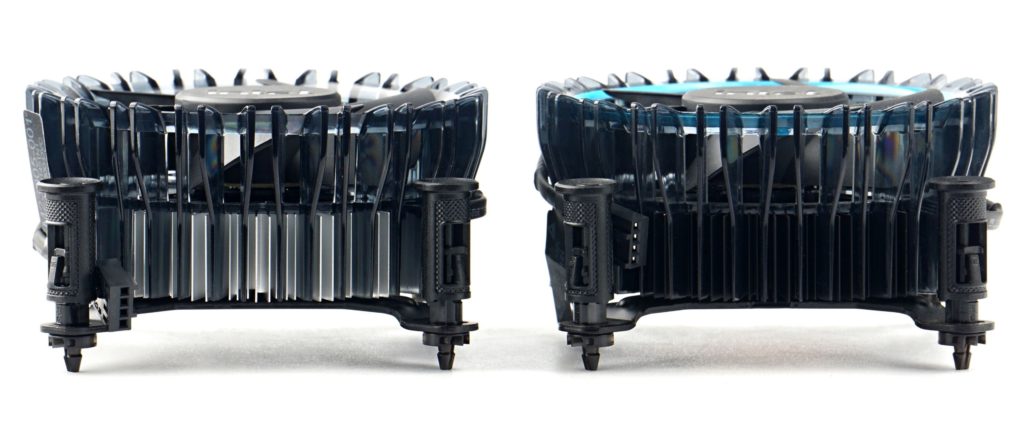
The Laminar RS1 shares a great many components with the RM1, one of which is the fan. In the following text it will thus be clearer and more pleasant to read when we point out the differences. With the fan, however, it is worth mentioning that large curved blades are used, the geometry of which has proven itself useful even with larger fans.
The RS1 fan is 80 mm in diameter and although the motor housing is quite large, the space for the blades remains large. The latter is definitely larger than it used to be on Intel’s older box coolers, although this fan no longer has six blades, but only five. Around the fan then is the same plastic crown as on the RM1 with one difference – it lacks the blue trim of the inner perimeter. But that is just a decoration.
The crown is removable, held in place by three screws on the heatsink. From the side view, it is well visible that there are air gaps between the plastic fins (this applies not only to RS1, but also to RM1), which reduce the cooling efficiency. More correctly, there should be an airtight hoop around the rotor, similar to the one on the largest Laminar (RH1) from the Core i9 package. The fan would thus exert more pressure on the heatsink and cooling would be more efficient. This issue was addressed a bit by Mark Tyson from TomsHardware, who made a simple collar around the fan. Such a tunnel, basically, as long as it extends at least a little over the height of the fan, also ensures a more laminar flow at the intake. The rotor thus has more air available, which also contributes to higher efficiency.
However, such a tunnel represents a higher production cost and this is probably the reason why it is missing in this class. Although it is strange then that they “paid” for such bulky cores (specially under Laminar RM1, which is made of copper). However, it is possible that these contribute more to the resulting cooling performance than the aerodynamic modifications around the fan.
The core of the Laminar RS1 is aluminum, similar to what Intel has used in the past. Cheaper coolers had cores made of cheaper material. But even so, the RS1 passive has a significantly higher weight (177g) compared to older aluminum monoliths, almost 90% higher. This is partly due to the steel cross with push-pins that used to be attached to the fan frame. Now they are part of the base.
The thermal paste is applied from the factory in three strips, which are merged into a homogeneous layer after installation. In proportion with the larger IHS of Alder Lake processors, the core cross-section has increased and the surface finish is different. It is both nickel-plated (previously it was raw aluminium) and features concentric machined circles. These are very fine grooves that increase the contact area with the processor’s heat spreader.
Three differently shaped fins alternate within the heatsink. Namely, two types that branch into a “Y” to increase the surface area. Of these, one is wider and the other narrower. Where the fork doesn’t fit, there is a straight, plain rib. Previously, on older heatsinks, it was either or. Either only forked fins or straight fins were used. With the new coolers, the developers were obviously more concerned with making the radiating area larger at similar dimensions.
The Laminar RS1 cooler is different from the RM1 in one more thing, it doesn’t have black anodized fins. They remained “natural”.
Methodology
The coolers are tested at maximum output and at lower speeds corresponding to fixed noise levels of 45, 42, 39, 36, 33 and 31 dBA. Noise levels are measured with a Reed R8080 noise meter (with a parabolic collar to increase sensitivity) at a distance of 15 centimetres from the sound source (fan).
Measurements are done traditionally in our wind tunnel, with two 500-rpm Noctua NF-S12A PWM fans at the intake and an equal number of these fans at the exhaust. The intake air temperature (21-21.1 °C) is constant, properly controlled throughout the testing. The tests run on an Intel Core i5-12400 with stepping H0 (i.e., a variant with the smaller core, which Core i3s, Pentiums, and Celerons also have). This, without power-limits (average CPU power draw is then around 93 W) and with PL2 limited to the TDP level (65 W). We simulate the load in Cinebench R23, the test motherboard is MSI MAG Z690 Tomahawk WiFi DDR4.In addition to CPU temperatures, we also pull the MOS and CPU socket sensor temperatures from the log into the graphs. So the results also show how the fan, in addition to the heatsink, also cools the surrounding area of the socket with components that heat up to critical values.
- Contents
- The Intel Laminar RS1 cooler in detail
- Results: Maximum performance
- Results: Higher performance (45 dBA)
- Results: Medium performance (42 dBA)
- Results: Lower noise level (39 dBA)
- Results: Low noise level (36 dBA)
- Results: Very low noise level (33 dBA)
- Results: Audibility threshold (31 dBA)
- Conclusion





